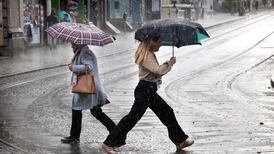FOLLOWING the safe removal (for future display) of the town's celebrated market cross, it is appropriate to review the first volume of historic atlases of Irish towns in which Kells features so prominently. Atlases of the first six towns (Kildare, Carrigfergus, Bandon, Kells, Mullingar and Athlone) have been appearing as fascicles since 1986 and are now gathered together in this impressive single volume.
The compilers and editors would probably prefer nothing more than that their meticulous work would inspire builders, architects, planners, teachers, local antiquarians, children and the general public to go around the streets, lanes, yards, graveyards, churches, old shops, sheds and garages which make up our towns to appreciate the difference periods in which they were built, laid out, modified, demolished or retained.
Why is there a kink in such a street, why does a lane go around a graveyard or is there an archway into a yard? This book will draw you to its pages, and its beautifully drawn four colour maps as well as its tables and concentrated digests of statistical information - which together constitute goldmines from which students will quarry for years to come.
The academy is deserving of the warmest appreciation for taking responsibility for the publication of the Atlas under its scholarly "umbrella. Our production rate of seven historic atlases in the past decade compares favourably with other European countries, though not as good as France and Germany; but from what I have seen, the cartographic standard, the thoroughness of the comb of historical sources and the completeness of bibliography and introductory texts seem highest in this Irish volume, which was printed and bound here, the maps having been compiled by Mary Davis and printed by the Ordnance Survey.
My quibbles are small, and centre around the quality of the reproduction of a few of the black and white reproductions of ancient drawings such as those of Bandon and Athlone, and the lowness of the angle from which the aerial photograph of early Christian Kells was taken. These are more than compensated for in dozens of other ways such as the historical introductions to Carrickfergus and Athlone, the very idea of dignifying the turnpike road into Kells and the alas vain (to date!) attempt at locating the coach office in Kenlis Street!
The sheer wealth of information, the quality of the plans and the interpretative essays with their reconstructions of lost features more than makes up for the relegation to the margins of socio economic discussion - which anyway will inevitably follow from the factual and cartographic bedrock which this compilation represents.
That ancient Ireland need no longer be regarded as rural, as Professor Binchy once had it, or as "a country of country people" as a countrywoman of Evita's once described Ireland to me, but is possessed of a unique urban heritage which took shape over several centuries, is a relatively recent revelation.
HISTORICAL work on our monastic towns and the richness of archaeological preservation at Dublin, Waterford and Cork apart, the "academisation" (and indeed the recent popularisation) of the whole subject of urban historical studies in Ireland and its projection into the wider European stage has been in a large part due to the energy, generosity and European background of Anngret Simms who, appropriately enough, was asked by the academy to be the original co editor of this project with John Andrews, the distinguished cartographic historian of that paper landscape, the Ordnance Survey maps.
The whole idea of the atlas is part of an international enterprise which derives from the long history of urban topographical analysis in central Europe. That Ireland's atlas has been so well received abroad is partly due to successful co operation with the Ordnance Survey whose original large, accurate scale, plans of the Irish towns were made in the decade after 1832.







